Blogs
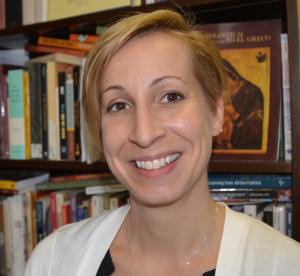
I, like so many, have been flooded with a mixture of emotions during this pandemic and self-isolation. While feelings of fear and anxiety often overcome me, I also have a profound sense of gratitude. I am privileged to be able to take a step back and ask religious questions those deep questions of meaning and value–with fellow religious educators. It is from phone conversations in isolation that Dr. Kathleen O’Gorman and I came to wonder what is this emergent curriculum, or “curriculum of pandemic,” that has descended upon us all, teaching us? What might we learn and how we are we called to respond in meaningful, educative ways? The first place Kathleen and I thought to process this emergent curriculum was with our learning community, to learn from this pandemic with our students and alums. We invited a small group of about 10 people, all of whom were enthusiastic about this gathering, into a process of introspection and learning. It was apparent from our initial correspondence leading up to and during our first session that we all want to feel connected in some way right now. This affirmed for me the need not just for community, but to create an intentional learning community. I –we– longed for a “community of conversation”–to connect and make meaning together. For me, the calling to teach means both teaching and learning and this pandemic called my colleague and I to be more intentional about our praxis as teachers and learners together. Kathleen coined the titled for our virtual sessions “Pandemic Pandemonium.” There is no script or textbook that tells us what we can learn and how we should respond to this global crisis; therefore, we developed a framework of four sessions from which will flow a process of unpacking this curriculum of pandemic. Drawing inspiration from Kathleen’s gifts of music and aesthetics, we framed each one around a different song to evoke our affective sensibilities. In our first session, we set the context for our process of teaching and learning through the pandemic by listening to Sam Cooke sing “A Change Is Gonna Come” set to a video with still images of people standing up for their human rights across the world throughout different moments in history. In sharing our interpretations and insights from this video and song, we discussed how we might connect these historical movements for change to the change emerging before us right now. What change do we want to see from this experience of sheltering in place, from teaching in learning through new modes and mediums, and from recognition the earth is healing itself while we remain still? We concluded that first session by observing how each movement for change in society was a movement towards deeper inclusion. How, then, is this curriculum of pandemic guiding us towards greater inclusivity? This set the tone for our next session, “Go to your room” (something Mother Earth seems to be telling us right now), and the introspection on our feelings and emotions as we withdraw from everyday life. Following John Lennon’s song, “Isolation,” we invited our group to start thinking about how this time away has opened new patterns of living. How have our feelings given rise to new ways of thinking and experiencing the world and how might we help others (those we serve, family, friends) discern the meaning and value of isolation as we are experiencing it? Our third session will reimagine how we “Come Together” (using the Beatles cover song by Gary Clark Jr.), by asking: What now? What is the meaning of all this? What are we learning from gathering in new ways and how does that inform and transform our praxis as religious educators; how does this change in patterns of living call us to rethink our curriculum and praxis towards greater inclusivity? In our final session, we curated a curriculum of closure to be the start of a new beginning. With help from The Beatles again, “Let it Be,” we reflect the meaning of Sabbath during this time as we ask what is Mother Earth telling us? How are we called by Mother Earth to Let it Be? We end our session with a pastoral plan informed by what we learned and how we are called to respond. I hope to return to these reflections as our process unfolds in the coming weeks. In the meantime, I am sharing this experience in developing a process curriculum to invite others, if you have not already begun to do so, to engage in a process of introspection and discernment with your learning community to uncover how your teaching and learning can respond to a curriculum of pandemic.
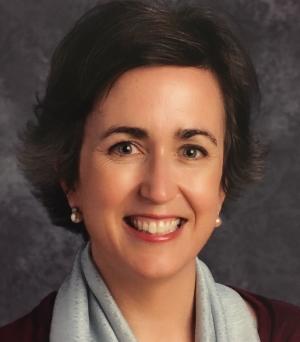
So many of us are struggling to connect meaningfully with our students during this period of unexpected distance. When we don’t get in-person connection time, it’s critical for us to build social and spiritual connection with our students within the online learning space. Giving our students numerical feedback and written feedback on submitted assignments is not enough. While some of my students have a strong network of relationships and resources to sustain them during this time, some do not. I see it as my responsibility to provide some opportunities for students to maintain and deepen connections with each other, themselves, and God. Live check-ins In my live, online classes, we check in with simple questions to start the session. I lean toward the veiled spiritual direction during these times—directing my students’ attention toward where God *is* present, rather than where God isn’t present. For example: • What is working for you in this time of isolation? • For what are you grateful right now? • Where are you finding light within so much darkness? It is my hope that students will take inspiration from each other’s answers. To be clear, this is not to approach the pandemic with a ‘Pollyanna’ point of view, but rather to illuminate that God is still at work, even when we are confronted with challenging circumstances. Student-led prayer on live meetings At the start of each live meeting, there is a student responsible for leading prayer. I instruct my students to choose a video, piece of art, or poem to share with us. We follow it with a minute or two of silent reflection and close with “words directed at God”—in other words, prayer. I provide them with links to prayers and examples of “words directed at God.” We do this in the classroom as well, and I find it to be a nice piece of continuity with the online learning environment. Collect evidence or fun or frivolous “accomplishments” I had my students check in one day with “What’s something fun or frivolous you’ve ‘accomplished’ during the shelter-in-place?” I found it important to clarify the idea of ‘accomplishment’ for this exercise. I explained the capitalistic assumption that we can still produce during this quarantine. This is not that. Rather, what are they doing for fun? Which hobbies are they picking up—either from a while ago or for the first time? We collected video and photographic evidence of their ‘accomplishments’ on a Padlet, a handy, potentially private, online board where students can creatively post their work. Students posted audio clips of music they composed, videos of themselves walking in the woods, and photos of knitting creations or plates of cookies, to name a few. It’s important for us to demonstrate to our students that having fun, letting loose, and being creative are critical parts of being a full human being, especially when we might feel like our usual outlets are cut off for these activities. It is my hope—again—that students might be inspired by others and offer support and encouragement to their classmates’ endeavors. Community building on FlipGrid I like the online learning platform of FlipGrid because it allows me to connect asynchronously with my students face-to-face and voice-to-voice. This is especially helpful for students who face challenges making it to the live online meetings. I recently posted a prompt for a simple game of two truths and a lie for my students. It was a fun, simple way to connect and communicate while getting to know each other better. Here’s a great article with even more ideas for ways to connect with students. All in all, it seems more important than ever to be attentive to the social aspect of our classroom learning environments, especially in the field of Religious Studies and Theology. I hope these steps will be helpful for you in nourishing this facet of your students’ academic lives!
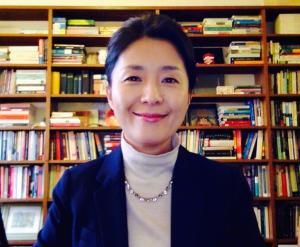
Parasite, directed by Bong Joon-ho, is the first non-English-language, subtitled film to win Best Picture in the Oscars’ 92-year history. President Trump censured the award of the foreign film in a February 2020 campaign rally, wanting to get back to the 1939 classic movie “Gone with the Wind” often criticized for its racist stereotypes. The distributor of Parasite immediately responded to the President with a tweet: “Understandable. He can’t read.” In an earlier speech accepting the Golden Globes Foreign Film Award, Bong observed, “Once you overcome the 1-inch-tall barrier of subtitles, you will be introduced to so many more amazing films.” In contrast to #OscarsSoWhite, the US President’s view of Oscars-not-quite-so-white reminds me of the connections between cultural texts and imperialism Edward Said explores in his work. I want to bring this discussion to my teaching context. When social justice is addressed in the classroom, one may assume that the teacher should discuss particular social issues or subjects that exist outside the classroom. Yet, if social justice is primarily about power, privilege, and oppression, a curriculum is inevitably a site in which social justice issues emerge. Curriculum selects, structures, and reproduces knowledge while authorizing certain constructions of knowledge and hence, producing the truth. How have knowledge and the truth been constructed? The western academy and education are rooted in a modern liberalism that presupposes “human” as the white European male. This ideology is racist and colonialist. In a Wabash podcast, “After Whiteness,” Willie Jennings points out that western education has been shaped by the dominant image of formation, “becoming”—becoming a “white self-sufficient man” and suggests an alternative view that highlights “belonging.” It was enlightening to understand where my frustration, along with a sense of inferiority, arose throughout my fourteen years of theological education in South Korea and the U.S. What you are going to “become” is not only unidentified but also, instinctively, unattainable. In my seminary, I was introduced to Luther, Barth, Bultmann, and Moltmann, just to name a few, by all male professors who had earned their doctorates in the U.S. and Europe. In my first year of Master’s studies in the U.S., I couldn’t believe that I was being taught by the prominent male professors whose names I had only seen in books. One of the professors, whom I respected greatly, said to me, “Korean students’ exegesis skills are good, but there is something they lack.” The second part of his words haunted me and I desired to have what I did not have without knowing what it was. Obviously, the professor did not mean that it is whiteness that I lack. Yet the ghost of whiteness surfaces in classrooms in various forms. The student-led campaign in the U.K., “Why is My Curriculum White?”, argued that the course content at universities served to reproduce the ideology of whiteness. This argument can apply to any discipline which was founded on the work of Anglo-European white males, including theological and biblical studies. What’s wrong with using their profound work that has influenced not only Western civilization and Christianity, but also the minds of people in other parts of the world? Why am I anxious about not using one of the canonized textbooks, which white male scholars authored, for my New Testament introduction course? Because we are speaking about power structures that normalize whiteness and white privilege. Institutional whiteness is incorporated in and reproduced through curriculum. As Jennings reminds us, that is how minoritized students and faculty in religious and theological education suffer the “racially formed sense of inadequacy.” Including one or two recommended readings written by non-white scholars in the syllabus is not enough, though one may start from there. Multiculturalism often promotes diversity by including a few minority individuals or groups, while still concealing power structures that perpetuate white supremacy and racism. In order to overcome white curriculum, the teacher needs to disclose the effects of racism embedded in the discipline and institutions, dismantle the ideology of whiteness inscribed in the textbook, and develop students’ ability to critically evaluate knowledge. There are “so many great [white] movies,” as the President said. Breaking “the 1-inch-tall barrier of subtitles” is more than watching a foreign film. Students know, or need to know, how to read subtitles. Can I read? Asking the question of whether my curriculum reads as white is a matter of social justice—the matter of death-dealing or life-affirming in the classroom.
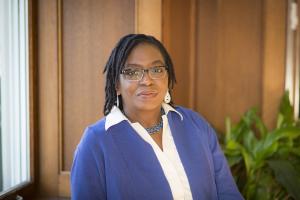
Being a professor during this pandemic has led me to several Wile E. Coyote moments. Looney Tunes character, Wile E. Coyote makes elaborate plans and employs complicated methods to achieve a singular goal—catching the Road Runner. One running gag involves the coyote falling from a high cliff; the coyote is so preoccupied catching the road runner that he runs off a cliff but doesn’t realize it for a moment. He then looks down, realizes that there is no ground beneath him, and falls. That moment that he looks down and sees that there is no ground under him is what I refer to as the Wile E. Coyote moment. He is so busy running and chasing that he does not realize that something fundamental has changed, and he can no longer run in the same way that he did before. Several times while teaching during this time of crisis, I felt like I was trying to run on air, mostly because, I too, was chasing a singular goal—normalcy. With so much turned upside down, it is understandable that we would all want some things to remain unchanged. I realized, though, that the classroom, and the teaching life in general, was not the place I would find normalcy. At first, I focused on changing my physical classroom course to a virtual classroom, but I did not stop to rethink my course that had been online all semester long –-even though those students were also experiencing a major context change. That’s when I realized that I was trying to run on air. When I think ahead to my weeklong concentrated course, still envisioning it as a completely in-person class, I am setting myself up to run on air. When, as collective faculty, we are leery of changes to policy for fear of loosening any standards and worry about precedent that will be set, we are trying to run on air. Wanting a sense of normalcy is very different from pretending that things are normal, or that we can continue to do things the way we have and our new normal will adjust around old rules. Teaching in times of crisis means realizing that in times of crisis, the rules are different. And in prolonged crises, the rules must be made up as we go along. Old ways of thinking no longer serve us—they will leave us running on air. There was one time when the Coyote caught the Road Runner. But as he was chasing, he did not realize that the Road Runner had gotten much larger. This was no longer the Road Runner that he knew. Nevertheless, he pulled up to the Road Runner with his knife and fork, realized that it was too large to eat, turned to the viewers, and angrily held up a sign to the audience: “Okay, wise guys,--you always wanted me to catch him–now what do I do?” In this time of pandemic, our classrooms, schedules, and overall reality have changed—for us and our students. Approaching this time as though it is normal may just be too big for us to devour right now. There will be a new normal when this crisis is over, but we do not know yet what it will look like, or when it will begin. So, maybe, we need to stop creating elaborate plans to catch the proverbial road runners professors pursue. We need to stop chasing the fear that our students’s education will be diminished if they don’t do all the things in the syllabus. Stop chasing our pre-pandemic publishing plan. Stop chasing all of New Year’s teaching and professional goals we set only four months ago. Some of us may continue to run, but now in a new direction as we learn our new contexts and work with students on how our learnings help us to respond. Some of us may jog as we relax expectations of our students and ourselves. Some of us may slow to a walk as we journey with students trying to make sense of it all. And sometimes we will need to sit and give ourselves permission to let many of our pre-pandemic plans just, “beep beep,” on by.

In the history of Christian thought, suffering has frequently been conceptualized as a process of “refinement.” Suffering “refined” believers and religious communities by (painfully) stripping away the unnecessary, as well as by revealing and perfecting the core dimensions of religious practice. I am writing this on the first day of the Spring Break—normally a time to slow down and reinvigorate oneself in the midst of a busy semester. However, this year it also comes in the midst of the global Covid-19 outbreak. In the state of Oregon, where I teach, the governor issued the stay-at-home order this morning. All universities in my state had temporarily shut down last week, and my institution is moving from face-to-face to fully online delivery. This is also the case with many universities across the country. Instead of refreshment, Spring Break has brought an accelerated work pace, deep concern for our families and communities, and a host of uncertainties about what lies ahead. As a teacher, alongside my colleagues, I am working to determine the best ways of adjusting our traditional face-to-face classes to alternative modes of delivery. As a theologian who studies the history of Christian theologies of suffering and healing, I cannot help but think of the Covid-19 crisis as a reality painfully refining our pedagogies, stripping away the obsolete and revealing and perfecting the essential dimensions. I am not suggesting that this global health disaster is somehow a positive force in the history of higher education (or humanity in general). I mourn the lost lives and the health, economic, and social tolls of this pandemic, the full extent of which we are yet to experience. At the same time, I am convinced that, as self-reflective educators, we are called to think creatively, including about negative factors, and, without denying the harm, still imagine possibilities of a positive impact they might bring upon our practice of teaching. By, painfully, taking away our more conventional models of instruction, the current crisis might refine essential, but at times, neglected core dimensions of a vibrant pedagogy; one that includes innovation and creativity, meaningful connection with our students, and awareness and responsiveness to wider cultural questions. As Covid-19 forced classes to move online, it presented faculty with a novel challenge of adjusting all face-to-face courses for remote delivery. As I ponder the best practices of successfully conducting my undergraduate honors seminars over Zoom, these sustained deliberations yield new pedagogical insights and highlight some deficiencies of the ways I have taught this class in a traditional format. The Covid-19 challenge pushes us to exercise renewed pedagogical creativity with our courses, which we are being forced to re-examine, reform, and even re-invent afresh. The recent days have brought a heightened awareness of many students’ daily sacrifices in pursuit of a college degree. I learned of some of my students’ lack of high-speed Internet access in their homes, of others’ inability to afford plane tickets, and yet others’ struggles with academic demands due to anxiety, intensified due to the outbreak. Covid-19 and the resulting academic adjustments have fostered a new, more meaningful, level of knowing my students, understanding their unique needs, and therefore being better able to teach, mentor, and support them. In an academic era anxious about the relevance of the humanities, the daily disruptions of Covid-19 may present students with intellectual opportunities to develop their own responses to the crisis in relation to the humanies’ rich traditions of making meaning of and resisting suffering. As instructors, we might intentionally make space in our courses to integrate questions exploring such connections between the past and the present (expressed in world religions, literature, philosophy and art). After all, this profound and unsettling crisis might yield unexpected refinements of our students’ pursuits of knowledge and justice, akin to its refining of our own teaching craft. (This blog has previously appeared on the University of Chicago’s Craft of Teaching the Academic Study of Religion blog.)
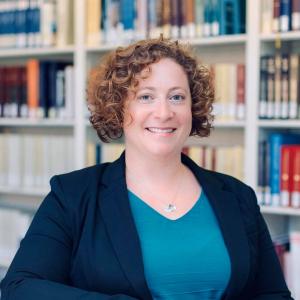
The most important pedagogical practice I have engaged in during this time of pandemic stress and isolation is making sure to check in with my students. At the beginning of every class, after we pray, I poll the students to find out how they are doing. Responses are anonymous (though have I have had many students email me to follow up about their answer, letting me know which responses were theirs). This honors the humanity of my students and gives me the opportunity to know what is in the Zoom room with us when we are trying to learn together. This also gives the whole class the opportunity to know how we can pray for the members of our learning community. My school moved to online learning the week of March 16. Each week I have asked different questions and offered different ways to engage while also offering space for how my students are coping. I have maintained four core questions: How am I doing in general? How am I feeling about my work in this course? What else do I need my professor to know? How am I feeling? This past week, I added a question about how they were feeling about the end of the semester. The week after Easter I asked students to share where they had seen signs of hope and new life. I have shared with my students that the most important thing right now is their mental, spiritual, and physical health. Not their schoolwork, not even for my class (I’m teaching my favorite class this semester and everything!). Taking time at the beginning of each synchronous learning time shows them that I am serious about that. When I ask students how they are doing in general, I have a multiple-choice response and one of them is “falling apart, like the world around me.” As their professor, I need to know when I have students who feel like they are falling apart. Not only do I take the opportunity to remind them that I am praying for them, but I also remind them that this is a perfectly normal response to a highly stressful situation and encourage them to seek help. I also get to remind myself that talking about course material might matter very little to the students who share that they feel this way. When I ask students how they feel about the course itself, I have another multiple-choice response option. One of those responses is “Help! I’m drowning!” I need to know when students feel like they are drowning in coursework. Just like me, my students are strapped for time to get work done and may often get interrupted by family members (including small children). Just like me, they may experience brain fog sometimes. When I know students feel like they are drowning, I can offer them a lifeboat. Do they need me to cut out some readings? Extend a deadline? Read a draft because they can’t tell if they are on the right track? Right now, my policy is that I will be as flexible as I possibly can with students; but if I don’t know that they need flexibility, I can’t offer it. When I ask students how they are feeling, I receive answers in the form of a word cloud. Each class these word clouds are profound, real, and heartbreaking. They are works of art reminding us of our humanity and the humanity of our peers in the classroom. We are tired, anxious, and stressed. We are worried and grateful. We are excited about graduating and devastated that it won’t be happening like we’ve been dreaming of for years. We are happy. We are sad. In a normal semester at the beginning of class, I ask students “How are you all doing today?” I usually receive short answers that are varying shades of “fine.” But this is not a normal semester, and we need more opportunities to check in and care about each other. We need to know that we are valued for more than our productive output in the classroom. What I am teaching my students through this practice is that I care about them as people, and I care about and honor whatever they are going through. As a seminary professor, this lesson is at least as important as the pedagogical content of my courses.
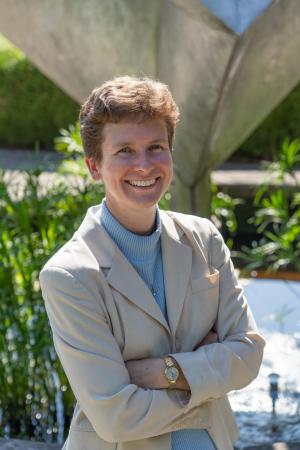
Covid-19 is not the first crisis through which I’ve taught. The past year has been one of intense personal crisis for me, and I’ve had to keep teaching right through it. Now we’re all in personal crisis. Everyone is doing a new thing in higher education. No one was prepared for this, we’re all learning how to do it, and we’re not doing it in a vacuum. Many of us are suddenly in crisis; people we know and love may be out of jobs or ill with Covid-19, or suffering in some other way. I have learned an important thing in this past year: When in personal crisis and needing to keep teaching, I have to change my expectations of myself. When I am in crisis, I will not be everything I think I should be as a teacher. (Even when I’m not in crisis, I will not always be everything I think I should be as a teacher.) In crisis, though, I have to let go of those expectations and get realistic. I will not have energy to meet with every student about his or her paper drafts like I usually manage to do. I will not have energy to create an imaginative new assignment or even, perhaps, a new exam. I will not have energy to have lunch with students every week to get to know them better. My energy will be expended by caring for myself—making sure I eat properly, see supportive friends, and work through my own stuff. There will only be so much energy left after those basic things. I have to make energy choices. Am I caring for myself before my students? Yes. In the same way that airline attendants insist we put the oxygen masks on ourselves before we put them on our children. If I am taking care of myself, I am some good to my students. If I ignore myself in order to do the things I think I should be doing, I will be no good to my students because I will be exhausted inside of a month. Start by checking in with yourself. Reflect on where you are and what you need. What are you thinking and feeling? What do you need for your physical health? What do you need for your mental and emotional health? What structures will enable you to feel somewhat stable and keep moving? Who do you need to help you? Once you’ve established where you are and what you need in this moment (and these things may change day-to-day), take steps to put these things in place. Get yourself set. Then look at your syllabus. What are the 2-3 things you most want your students to get from class? What on your syllabus will accomplish those? What can you cut and still make sure students receive those things? If you’re reading this blog, you’re a good teacher. Because you are a good teacher, even if you cut some things, your students will still have a good experience and learn what you want them to learn. Readers of this blog are professors who care about our students. We want to do well by them, to teach and mentor for their lives. This means we probably have exceptionally high standards for our teaching. We are probably inclined to forge ahead trying to make this new learning environment work for our students or even to make sure they have what they need in their personal experience of the crisis. But if we forget to attend to ourselves, we’ll pass out from exhaustion before we have a chance to help our students.
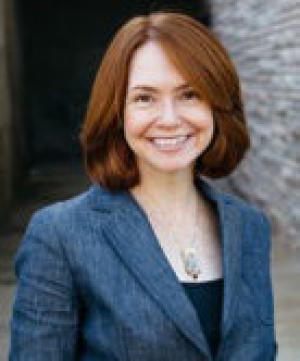
What simple gestures and accommodations at the end of a semester can lighten the load without compromising teaching and learning? Educators expect waning energy as a semester and academic year conclude. Students are overwhelmed trying to finish overdue assignments, final projects, and exams. Faculty are at the breaking point with grading, administrative tasks, and work/life balance. While student energy for learning flags, most faculty tap into their very last teaching reserves to end courses in the best possible spirit. This normal rhythm of attenuating energy is intensifying in the Covid-19 crisis. End of year celebrations like graduation are not there to provide momentum, needed affirmation, and closure. Educators have become a last line of continuity and support for increasingly vulnerable students. We are teachers turned life-coach, counselor, parent, and pastor. All the while, grief and loss are mounting on every side. Here are four simple ways to lighten the teaching and learning load to finish well: Take a hard look at any remaining assignments left in the semester. Chances are, only one or two assignments are crucial assessment indicators for final grades. In one of my courses, it is a final exam. In another, it is an accumulative writing project. Other smaller-scale learning assignments that support student engagement and course tracking won’t impact an overall course grade to any significant degree. In the last few weeks of teaching, be transparent about which few assignments are crucial to finishing well in order to lighten the teaching and learning load. In one course, I’ve made other assignments optional or extra credit. In another, I’ve made select assignments pass/fail. Options and clarity help students make informed decisions about where they should focus their waning energy, and faculty can save significant time doing less low priority grading. Diversify ways an assignment can be submitted. In one of my courses, students are required to write a formal film review. I’ve offered them the alternative of submitting a slide presentation with audio narration. Or they can choose a creative project connecting a film’s themes to the challenges of Covid-19. Different choices allow students to meet assignment objectives with less fatigue and anxiety or less intensive editing help from remote support services. Including opportunities to connect with Covid-19 fosters learning engagement and helpful conversations in their life circles. Students reveal surprisingly diverse and creative communication skills when modes of presentation are flexible. And diverse submissions make the drudgery of grading … almost … fun. Allow students to partner with peers on assignments. In one of my courses, students were writing individual reviews on one of three books to complete the semester. Fifteen papers to write, fifteen papers to read and grade. I adjusted the assignment and asked students reading the same book to submit one review written collaboratively. They divided tasks and wrote with improved shared insight while bolstering their peer-to-peer relationships weakened by less classroom interaction. Overall, shared grades were higher, everyone benefited, and I graded 3 book reviews instead of 15. Most important: reassure, reassure, reassure. Students need a strong ongoing word of encouragement to finish well. Let them know expectations and goals are shifting and simplifying in response to Covid-19. I remind students at every possible moment that their singular task is to stay engaged in course learning to the degree they are able and maintain good communication about their circumstances and needs. In return, it is my responsibility to make sure they have every possible opportunity to finish their courses well. Reassurance means hosting conversations on Zoom or other discussion platforms about specific challenges or griefs impacting students’ lives. Reassurance means reminding them that, even in very uncertain times, they have value and gifts and a future. Reassurance means sharing our passion for our area of study and its resourcefulness during a pandemic. Reassure, reassure, reassure. It is less time intensive than grading, and it will help students reach the finish line with wellbeing in mind. Teaching and learning are life-giving and can be a lifeline. Though our energy is low, and our grief is high, we can do some simple things to ease the load and finish well.

There's an old adage that says "The worst teaching method is the one you always use." We may consistently use a particular teaching method because "it works," or, because we may be unaware of other methods that can help engage students to bring about learning outcomes. Admittedly, we sometimes don't use a greater variety of methods because we fear risking that it may not work, students may not like it, or, it's beyond our comfort zone. Expanding our teaching repertoire by offering a greater variety of student learning methods and activities is not about making things interesting or entertaining (though those are not bad in themselves). Learning activities: Tap into multiple intelligences Increase student engagement Aid in concepts-attainment Help tap into different facets of understanding (Explanation, Application, Interpretation, Perspective, Self-knowledge, Empathy) Provide an opportunity for application Tease out creativity Help students make connections (the brain learns by making connections) Help students retain what they have learned (if a student has not retained it, they haven't learned it). Attached is a Student Engagement Methods checklist that can help expand your teaching repertoire. Methods applicable to the online learning environment are identified by an asterisk. Note that most classroom learning methods can be applied to the online virtual context to some extent or in some form. Review the checklist and check those methods you use most frequently. Then, check those methods you have never used. Finally, review the list to determine which (new) methods can serve as effective student engagement learning activities that can help your students achieve your course or lesson learning outcomes. Be adventurous, try something new!
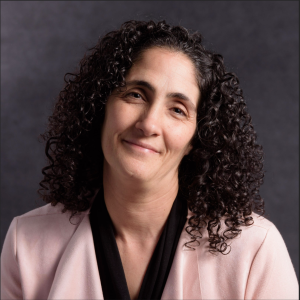
At first blush, the rest of the world’s shift to virtual learning in March seemed immaterial to our constituents who are in a heavily online MA in Jewish Education. We are lucky to boast well-trained and experienced online faculty and, perhaps even more important, students who are whizzes with Zoom, Schoology, and an array of online educational tools. Our people are at home in their virtual academic community. They already knew to mute themselves when not speaking in a teleconference, so we were really ahead of the game! Honestly, we felt immune to the whiplash others were experiencing with the very abrupt shift to online teaching and learning. And yet, ‘business as usual’ has been very UNusual. As a parent of three myself, I was quick to recognize the double demands that would be placed on working parents. This affects both our faculty and student body, many of whom are caring for young children and/or aging parents while working full-time in Jewish education. With childcare centers closed and many dual-career families trying to work remotely, this complexity appeared on our radar quickly. A few weeks after moving all courses online, we announced that Hebrew College would not be holding an in-person graduation in June. Especially for distance students, who cannot wait to finally bring their families to campus, hug their classmates and teachers, and wear a cap and gown to symbolize all that they have invested in their degrees, this was a huge blow. And now, we have gone from a trickle to a steadier flow of job losses, furloughs, and professional uncertainty. For the soon-to-be-graduates, many have gone from looking at the many pathways forward for their careers to worrying about their next paycheck in their current role. Even though our students are well-versed in learning online and forging and maintaining deep relationships over Zoom and FaceTime, this experience has been difficult. And so, I imagine for those faculty and students for whom virtual learning is new, and are experiencing the same stressors and uncertainties as I’ve described, this experience is multi-layered and fraught. With that in mind, I’d like to share my approach to graduate education, which builds on what I’ve learned over a decade-plus teaching virtually and adapts it for the moment at hand. • Focus first on the ‘extracurricular.’ With so much uncertainty and added stress in their personal and professional lives, students need to use the reflective space of the classroom to process their experiences—and to channel them into future material for growth. To my mind, this now trumps any other course objective. Once grounded and feeling seen (and this must happen repeatedly throughout the crisis), students will have greater capacity to engage in the material and hopefully reach many of the original course objectives. Do this by creating distinct spaces and times for processing and opportunities to grieve for whatever feels lost—this may be one-to-ones with faculty, a discussion board set aside for this purpose only, and/or facilitated/recurring peer conversations. These multiple entries allow for all types of processing so that students can find their comfort zone. • Uncoverage over coverage. Given time lost in the shift to online learning, and significant class time invested in shoring students up by reinvesting in relationships and care, it seems impossible that everything can still be covered. Though I toyed with it briefly, I shied away from upping the expectations of time for my course this spring in recognition of the physical and emotional work so many students were balancing on the home front. So, I focus on uncoverage rather than coverage. What happens when we let go of covering every thinker in a time period? Does it allow us to delve more deeply into one theologian? Or perhaps explore a single theme across many generations of thinkers? Allowing students the space to unpack (or uncover) texts, analyze them critically, and relate them to what’s happening in their lives today may make for better integration and assimilation of the material in the end. • Expect less, but give more. Where you can, lighten the reading load by removing a non-essential reading, mark one or more tangential sessions optional, and let students know that you will approach their work with an especially generous heart this semester. This is not meant to suggest compromising our academic standards, but to adjust them in places where flexibility exists. Recognize that students may have less to give academically but at the same time need more mentorship, empathy, and care—and try to navigate your own personal-professional juggle to accommodate those needs. To me, this is the most important thing I will ever teach my students. As teachers of theology, religion, religious education and thought, we have an added responsibility—and privilege—to create caring communities that recognize the holistic nature of our students’ lives. I am always mindful that when I teach these students, who are themselves the shapers of young Jewish hearts and minds, I am modeling both a pedagogical and ethical approach to creating a classroom community—be it ‘real’ or really virtual.
Categories
Write for us
We invite friends and colleagues of the Wabash Center from across North America to contribute periodic blog posts for one of our several blog series.
Contact:
Donald Quist
quistd@wabash.edu
Educational Design Manager, Wabash Center
Most Popular

Co-Creating an Online Education Plan
Posted by Samira Mehta on June 10, 2024

Analog Versions of Digital Classrooms
Posted by Samantha Miller on October 8, 2025

Are You Okay?
Posted by Nancy Lynne Westfield, Ph.D. on October 1, 2025

Cultivating Your Sound in a Time of Despair
Posted by Willie James Jennings on June 4, 2025

Plagiarism as Gaslighting in the Time of Artificial Intelligence
Posted by Brian Hillman on September 8, 2025